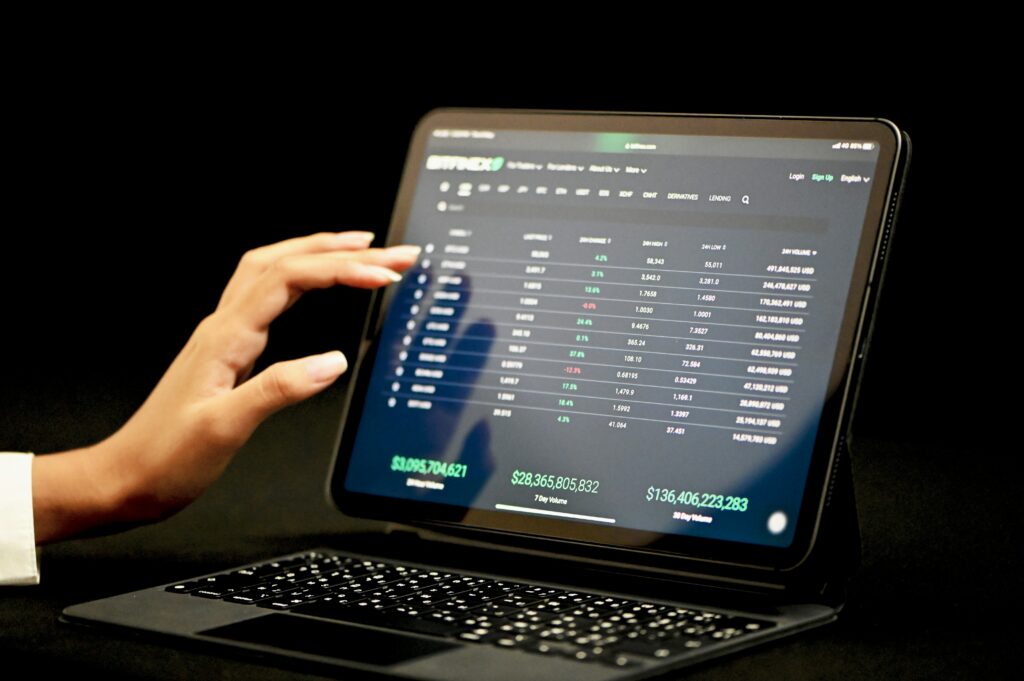Introduction: The Game Has Changed
Sports betting isn’t fringe anymore—it’s mainstream, digital, and expanding fast. What was once a shadowy pastime limited to smoky backrooms or Vegas sportsbooks is now a global, regulated industry worth hundreds of billions. You can bet from your phone, in real time, on leagues from the Premier League to the LCK, and on everything from match winners to the next corner kick. It’s fast, accessible, and evolving by the month.
Legalization has played a massive role. In the U.S. alone, more than 30 states have legalized some form of sports betting since 2018. Europe remains a mature market, while countries like Brazil and parts of Africa are ramping up quickly. Asia’s mobile-first economies are also embracing digital platforms at scale. This surge in legality has triggered a flood of investor money, startup innovation, and competition among sportsbooks.
In a market moving this fast, following the trends isn’t a choice—it’s survival. Rule changes, tech leaps, and user behaviors can shift the playing field overnight. Whether you’re a bettor, operator, or just curious about where sports and money intersect, understanding these trends is how you stay smart, stay sharp, and stay in the game.
Trend 1: In-Play Betting and Real-Time Wagers
The Shift from Pre-Match to Mid-Match
Traditional pre-game bets are no longer the main draw. Bettors today are increasingly focused on real-time action, looking to engage with a match as it unfolds. In-play betting allows users to wager on outcomes and events after the game has started, injecting more excitement and strategy into every minute.
- Bettors now expect odds to shift dynamically as the game progresses
- More opportunities emerge at halftime, during injuries, or after key plays
- Market growth is driven by immediacy and interaction
Technology Is the Backbone
Behind the scenes, advanced tech fuels the entire in-play betting ecosystem. Bookmakers rely on sophisticated systems to track every play and instantly adjust odds.
- Real-time data feeds from the field of play
- Automated algorithms update betting lines in seconds
- Mobile apps push live wagers directly to users, anytime, anywhere
These systems are designed to keep pace with the unpredictability of sports, offering bettors continuously updated opportunities in a seamless interface.
What Experienced Bettors Are Watching
In-play betting isn’t just about reacting quickly—it’s about reading the game and knowing when to strike. Savvy bettors stay locked in on certain indicators:
- Momentum shifts after turnovers or substitutions
- Player fatigue or potential injuries
- Tactical formations that suggest scoring chances
- Referee tendencies and match tempo
By observing these micro and macro cues, experienced bettors gain a strategic edge, placing high-value bets others might overlook.
In-play betting transforms passive watching into active analysis—where every moment could mean a new opportunity.
Trend 2: AI and Predictive Analytics
The smarter the tech gets, the tougher the line becomes. In 2024, AI is the quiet powerhouse behind betting markets. Sportsbooks don’t just guess anymore—they process mountains of historical stats, player metrics, injury reports, and even social media buzz in seconds. The result? Betting lines that are leaner, sharper, and harder to exploit.
But it’s not just the house using machine learning. Bettors are loading up too—building their own predictive models, training custom algorithms, tracking micro-trends the human eye might miss. Tools that once belonged to Wall Street prop shops are now in the hands of sports gamblers with a Python script and a bankroll.
Still, there’s a ceiling. When everyone uses data, the edge evaporates fast. And models, no matter how advanced, can choke on real-life chaos: a quarterback’s off-field drama, weather shifts, or a key injury mid-play. Blind trust in AI is still trust—just dressed in code.
The rule hasn’t changed: data helps, but discipline wins. Use the machines. Just don’t bet your bankroll on them alone.
Trend 3: Rise of Niche Markets and Micro-Bets
The action isn’t just on the main stage anymore. As sports betting matures, it’s branching out fast—well beyond traditional leagues. Esports, darts, table tennis, even chess: all are evolving into legitimate, high-velocity betting markets. Why? Because bettors are hungry for variety and sharper odds, and these lesser-known arenas deliver.
Then there’s micro-betting. We’re not just wagering on final scores—now it’s all about the granular. Will the next serve be an ace? Who gets the next throw-in? This kind of bet brings a new layer of excitement, especially when paired with live viewing. And while the margins might look slimmer, savvy bettors know these markets can offer opportunities that mainstream ones don’t.
With fewer eyeballs and less public money on these events, the edges are there—if you know where to look. But it’s not a free-for-all. Success here demands research, timing, and discipline. If you’re sharp, micro-markets can be your fast track to an advantage the big players aren’t even chasing yet.
Trend 4: Social and Community-Based Betting
Betting is no longer just between the bettor and the sportsbook. Peer-to-peer platforms and group betting pools are shaking up the way people place wagers—turning it into a communal experience. Whether it’s fantasy-style leagues with real money or small private betting circles among friends, the social aspect is creeping in fast.
Integration with social media is accelerating this trend. Users can now share slips, track friends’ bets, and even jump into trending wagers with a tap. Live streams, comment threads, and quick polls are nudging real-time betting decisions. This mix of visibility and social proof is powerful—it keeps users active and emotionally invested.
Then there’s the rise of influencer and tipster-driven betting culture. Content creators with insider angles, analytics skills, or just charisma are shaping odds and swaying opinions at scale. Their communities trust them—sometimes more than official odds-makers.
This new layer of social gambling is changing how bettors engage, influencing not just what gets bet on, but how and with whom. The game is evolving into something more tribal—and a lot more personal.
(Learn more on evolving user behavior at BetVlogHub)
Trend 5: Regulation, Compliance & Responsible Gaming
Smarter Platforms Through Tighter Controls
Regulatory pressure isn’t just a legal concern—it’s actively shaping the user experience across global sports betting platforms. Compliance standards push operators to invest in technologies that ensure transparency, fairness, and accountability. This shift has led to more intuitive interfaces, verified identity systems, and clearer terms for users.
- Increased verification steps for safer sign-ups
- Transparency in promotion terms and payout structures
- Enhanced fraud detection and anti-money laundering protocols
Global Legal Frameworks Reshaping UX
As sports betting expands internationally, regional regulations are influencing how platforms are built and how features are delivered. Each market may require different forms of user identification, limitations on advertising, or bet amount caps.
- European markets emphasize GDPR and data protection
- U.S. states have varying rules on limits, promotions, and partnerships
- Emerging jurisdictions focus on mobile-first betting with responsible safeguards built in
Tools and Education for Responsible Gambling
Going beyond policy, today’s leading platforms are integrating proactive tools to help users manage their behavior. Responsible gambling is no longer a checkbox—it’s an essential part of platform design.
- Self-exclusion options with customizable timeframes
- Real-time spending and activity dashboards
- Educational resources embedded into the betting experience
- Pop-up alerts for high frequency or excessive wagering behavior
Responsible gambling doesn’t mean restricting fun—it means maintaining a sustainable and safe betting environment for all users.
Where It’s Heading
The sports betting space is shifting again, and it’s not just about who wins or loses. Prediction markets—platforms where people wager on the probability of events—are gaining traction. These aren’t new, but blockchain tech is finally making them scalable, transparent, and decentralized. It’s peer-to-peer betting without a middleman calling the shots.
Then there’s the NFT layer: not just collectibles, but tokenized bets and loyalty rewards. Think digital assets tied to wagers or exclusive access based on your betting activity. It’s experimental, but some startups are already offering NFTs that include profit-sharing from betting pools. The tech is volatile, but the promise is real—especially for bettors who want a stake in the system beyond single wins.
Personalization is also reshaping the field. Custom odds, pick-your-own-bet features, and AI-driven suggestions now let users dictate their experience. Smartbooks are banking on user-driven models to keep engagement high and churn low. Betting is no longer one-size-fits-all—it’s as tailored as your Netflix feed.
So where does this leave everyday bettors? Two imperatives: stay curious and stay sharp. Blind loyalty to old methods won’t cut it. Watch the tech, test the platforms, and make learning part of your process. The future of sports betting is more agile, more interactive, and more about long-term edge than lucky breaks.


 As both a co-founder and key contributor at BetVlogHub. Auritha drives the platform’s vision of blending betting insights with cutting-edge technology. Her work focuses on innovation, user experience, and building resources that empower readers to make smarter betting decisions.
As both a co-founder and key contributor at BetVlogHub. Auritha drives the platform’s vision of blending betting insights with cutting-edge technology. Her work focuses on innovation, user experience, and building resources that empower readers to make smarter betting decisions.

